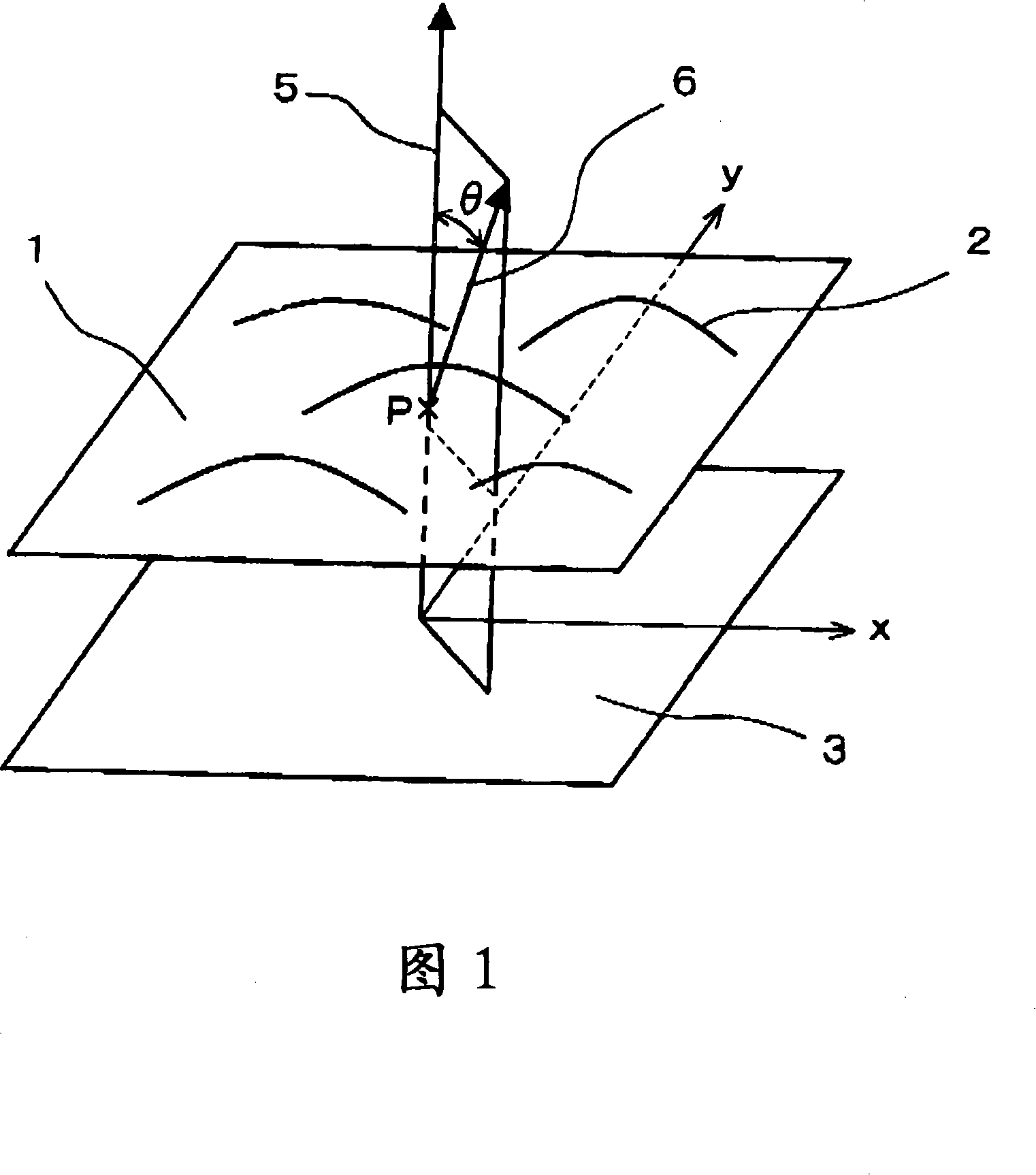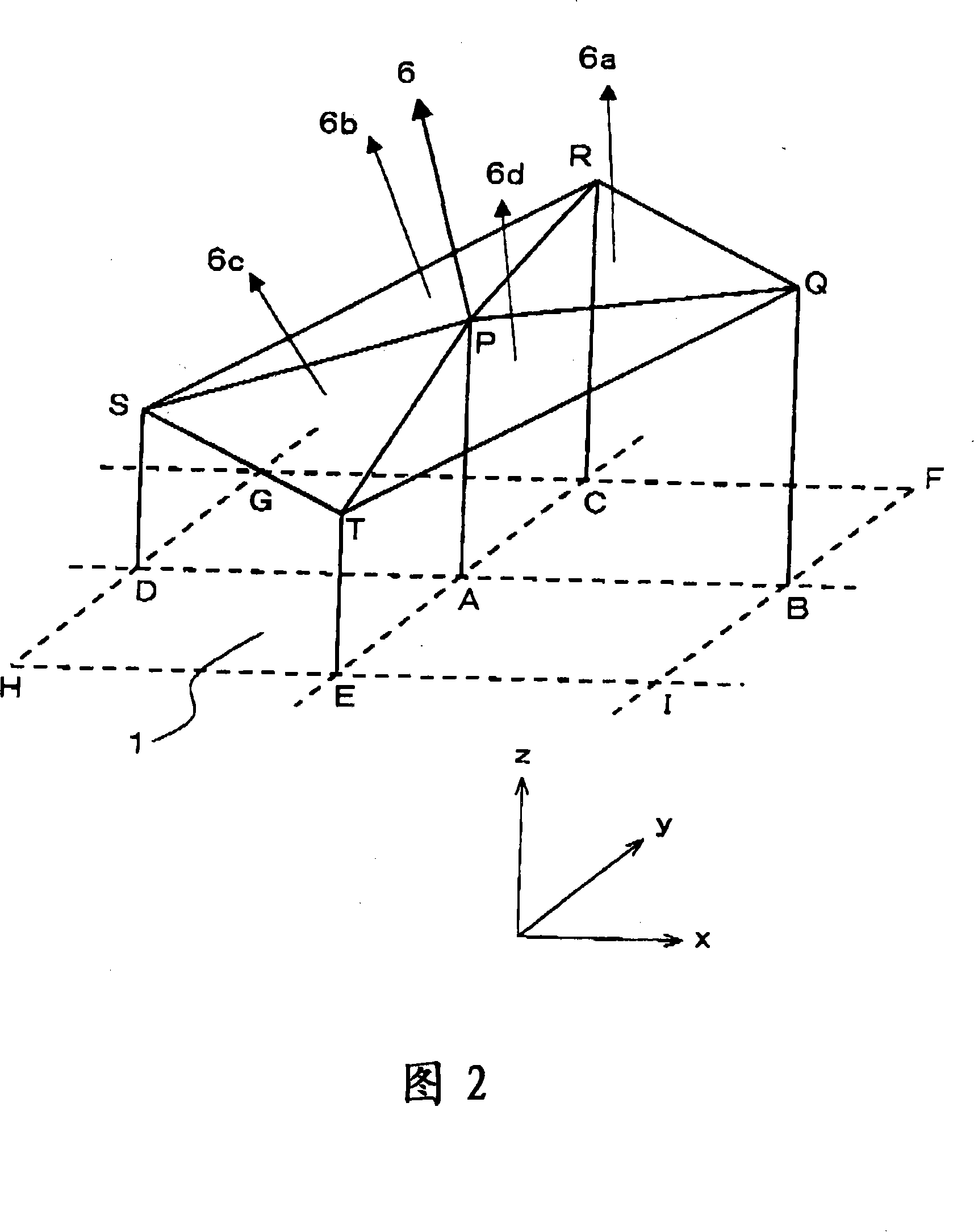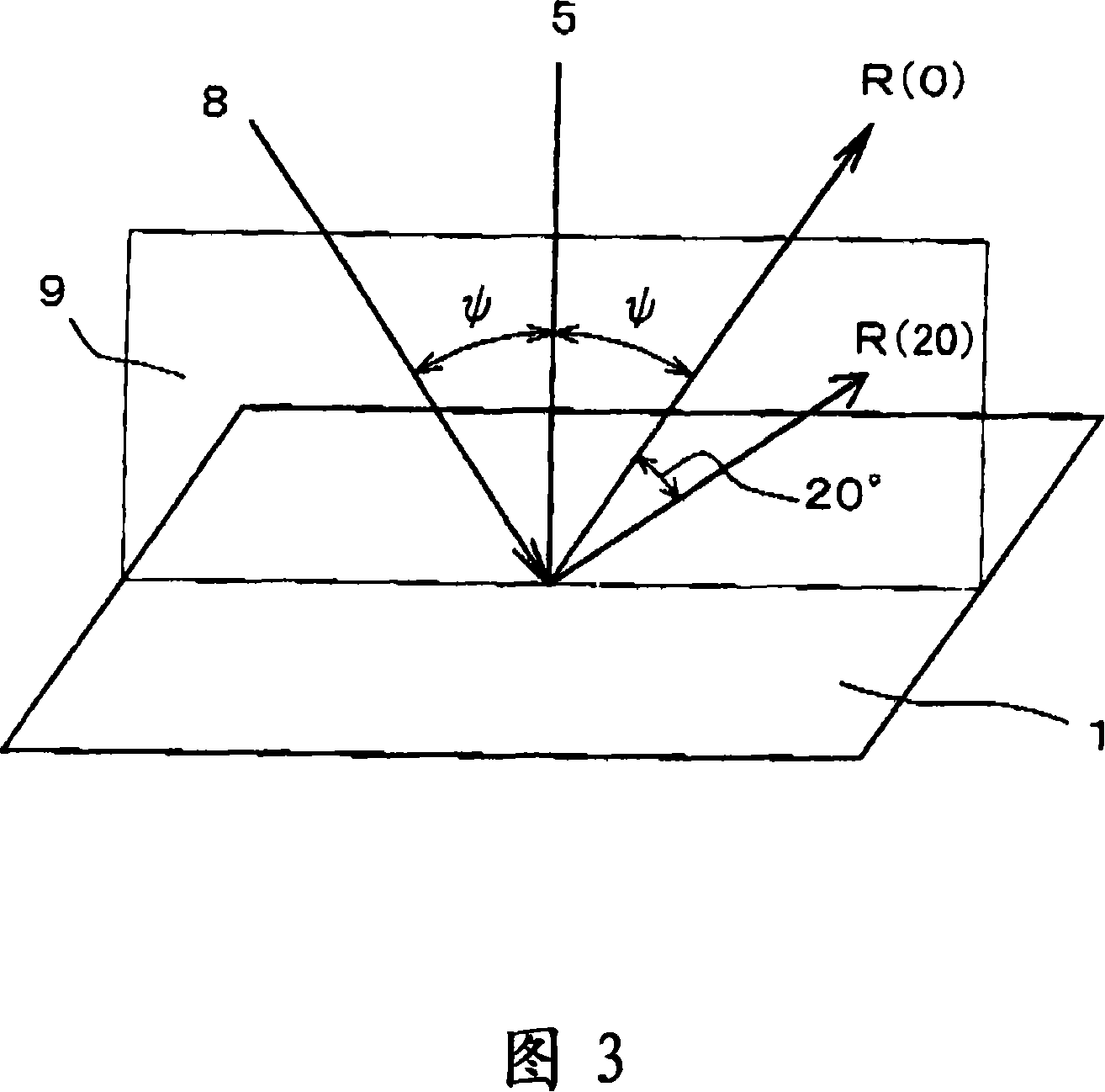Antidazzle optical film and preparation method thereof
A technology of optical film and resin film, which is applied in the field of anti-glare optical film of polarizer and its preparation, can solve the problems of no anti-glare optical film and its preparation method, obtain visibility, inconvenience, etc., and achieve high anti-glare effect, whitening Effect of reducing phenomenon and improving visibility
- Summary
- Abstract
- Description
- Claims
- Application Information
AI Technical Summary
Problems solved by technology
Method used
Image
Examples
preparation example Construction
[0076] A method of producing a film having a specific surface shape as another item of the present invention will be explained below.
[0077] In the present invention, glass having fine irregularities formed on the surface by a prescribed method is used as an embossing template. As a starting sheet for this embossing template, SiO 2 General-purpose glass as the main ingredient. The glass may be soda lime glass called blue glass, borosilicate glass called white glass, or quartz glass. The glass used is not limited as long as it can be etched with an aqueous solution containing hydrogen fluoride and dissolved isotropically with the solution. However, since glass is subjected to a heat-pressing step when transferring fine irregularities made by etching onto a transparent resin film, or when a transparent substrate coated with an ionizing radiation-curable resin is adhered to an irregular surface, The state is subjected to exposure to ionizing radiation, so glass is expected t...
Embodiment 1
[0125] Soda lime glass having a thickness of 1.1 mm obtained from Nippon Sheet Glass Co., Ltd. Sandblasting. The blasting pressure is 0.5kg / cm 2 (50kPa), the blasting time is 120 seconds. The thus-blasted glass was ultrasonically washed, dried, immersed in 10% by weight of hydrofluoric acid at 40°C for 1200 seconds, sufficiently washed with pure water, and then dried to obtain a template glass.
[0126] 10 g of urethane acrylate ultraviolet curing resin "UA-1" obtained from Shin-Nakamura Chemical Co., Ltd., and 0.5 g of photopolymerization initiator "Lucirin TPO" (chemical name: 2,4 , 6-trimethylbenzoyldiphenylphosphine oxide) was dissolved in 10 g of ethyl acetate to prepare a coating solution. This coating solution was coated on one side of an 80 μm thick triacetylcellulose film obtained from Fuji Photo Film Co., Ltd. with a #16 bar coater in the dark. Let it dry in an oven at 80° C. for 5 minutes, use a hand push roller to adhere the coated surface in an uncured state t...
Embodiment 2
[0131] An anti-glare optical film was prepared in the same manner as in Example 1, except that the blasting particles were changed to monodisperse aluminum crystals "Sumicorundum AA-18" (average particle diameter: 18 μm) obtained from Sumitomo Chemical Co., Ltd., the blasting particles were The sand pressure is 0.4kg / cm 2 (40kPa), and the blasting time is 120 seconds. The optical properties and visual evaluation results of the obtained films are shown in Table 1. It was found that the film also had sufficient anti-glare properties and anti-whitening ability.
PUM
| Property | Measurement | Unit |
|---|---|---|
| Depth | aaaaa | aaaaa |
| The average particle size | aaaaa | aaaaa |
| Etching depth | aaaaa | aaaaa |
Abstract
Description
Claims
Application Information
 Login to View More
Login to View More - R&D
- Intellectual Property
- Life Sciences
- Materials
- Tech Scout
- Unparalleled Data Quality
- Higher Quality Content
- 60% Fewer Hallucinations
Browse by: Latest US Patents, China's latest patents, Technical Efficacy Thesaurus, Application Domain, Technology Topic, Popular Technical Reports.
© 2025 PatSnap. All rights reserved.Legal|Privacy policy|Modern Slavery Act Transparency Statement|Sitemap|About US| Contact US: help@patsnap.com



